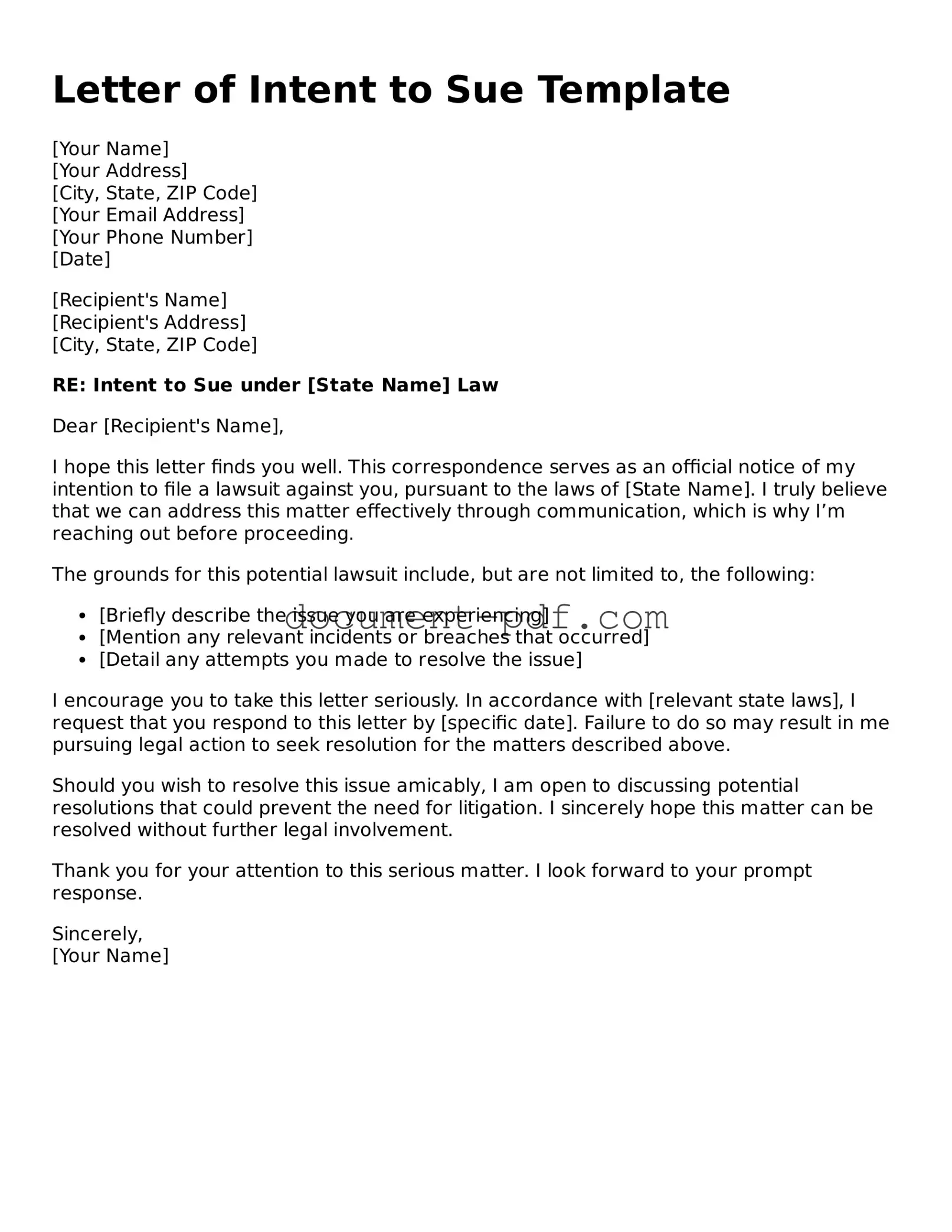Letter of Intent to Sue Template
[Your Name]
[Your Address]
[City, State, ZIP Code]
[Your Email Address]
[Your Phone Number]
[Date]
[Recipient's Name]
[Recipient's Address]
[City, State, ZIP Code]
RE: Intent to Sue under [State Name] Law
Dear [Recipient's Name],
I hope this letter finds you well. This correspondence serves as an official notice of my intention to file a lawsuit against you, pursuant to the laws of [State Name]. I truly believe that we can address this matter effectively through communication, which is why I’m reaching out before proceeding.
The grounds for this potential lawsuit include, but are not limited to, the following:
- [Briefly describe the issue you are experiencing]
- [Mention any relevant incidents or breaches that occurred]
- [Detail any attempts you made to resolve the issue]
I encourage you to take this letter seriously. In accordance with [relevant state laws], I request that you respond to this letter by [specific date]. Failure to do so may result in me pursuing legal action to seek resolution for the matters described above.
Should you wish to resolve this issue amicably, I am open to discussing potential resolutions that could prevent the need for litigation. I sincerely hope this matter can be resolved without further legal involvement.
Thank you for your attention to this serious matter. I look forward to your prompt response.
Sincerely,
[Your Name]
